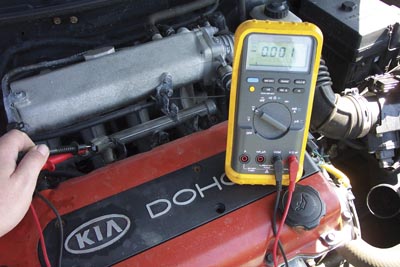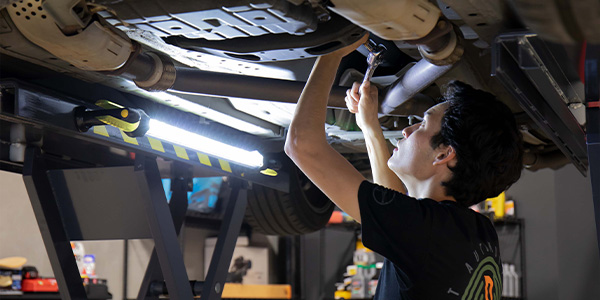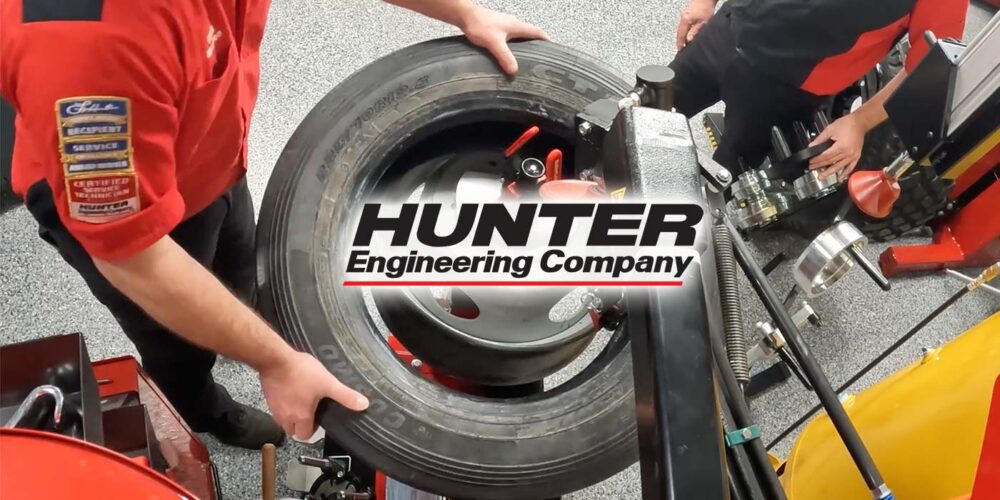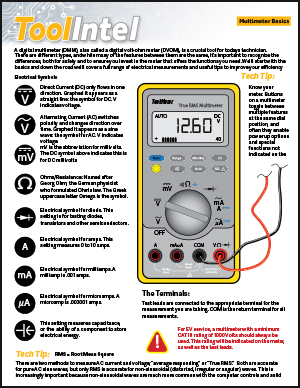When motor oil isn’t changed often enough, varnish deposits and sludge begin to form inside the engine. If the oil is neglected long enough, it will eventually turn into goo and ruin the engine.
“Oil sludging” has become a serious problem in recent years for a number of reasons. One is that more new car buyers lease their vehicles rather than purchase them. Because they know they’re only going to keep the vehicle for two, three or four years, they tend to forget important things like changing the oil and filter. They figure the next owner can pay the price for their neglect. But all too often, the oil doesn’t go the distance and their engine is gunked up or ruined before the lease expires.
 Aggravating the situation are consumer misconceptions about how often the oil needs to be changed. In recent years, many vehicle manufacturers have extended their recommended oil change intervals to reduce maintenance costs for the vehicle owner — and have run into trouble. The Center for Auto Safety (www.autosafety.org) has logged more than a thousand complaints about oil sludging problems from motorists who thought they were following the service intervals recommended in their owner’s manuals, but ended up with a crankcase full of sludge.
Aggravating the situation are consumer misconceptions about how often the oil needs to be changed. In recent years, many vehicle manufacturers have extended their recommended oil change intervals to reduce maintenance costs for the vehicle owner — and have run into trouble. The Center for Auto Safety (www.autosafety.org) has logged more than a thousand complaints about oil sludging problems from motorists who thought they were following the service intervals recommended in their owner’s manuals, but ended up with a crankcase full of sludge.
Extended oil change intervals of 7,500 or 10,000 miles or more are based on ideal operating conditions, not the type of short-trip, stop-and-go driving that is typical for many motorists. Worse yet, some vehicles have no scheduled oil change interval and use an “oil change reminder light” to signal the driver when an oil change is needed. Unfortunately, the reminder light may not come on until 12,000 miles or more in some vehicles — and even then the driver may ignore it.
Oil life depends on many factors including driving conditions (speed, load, idle time, etc.), environmental factors (temperature, humidity, airborne dirt) and engine wear. As a general rule, most experts still recommend changing the oil and filter every 3,000 miles or six months, whichever comes first. Why? Because this provides the best all-round protection for the average driver.Most drivers should actually follow a “severe” service maintenance schedule (3,000-mile oil changes) rather than a “normal” service schedule to protect their engines. Severe service is when most trips are less than four miles (10 miles when the temperature is below freezing), prolonged driving at high speed during hot weather, idling for extended periods of time (20 minutes or more), towing a trailer and/or driving in dusty or heavily polluted areas.
Some engines, such as diesels, suffer more blowby than others and typically require more frequent oil and filter changes. For most passenger car and light truck diesels, the oil should be changed every 3,000 miles without exception — especially in turbo diesels. Turbocharged gasoline engines also require more frequent oil changes because of the high temperatures inside the turbo that can oxidize oil. A 3,000-mile oil change interval is also recommended for all turbocharged gasoline engines.
When the oil remains in the crankcase too long, the additives that enable it to lubricate and protect the engine become depleted. The oil wears out and no longer has the same viscosity range it had when it was new. It also gets dirtier and dirtier as moisture, acids, soot and wear particles accumulate. The filter can only remove so much, and eventually plugs up allowing unfiltered oil to reach the bearings. Once this occurs, wear skyrockets and the engine is headed for disaster.
FLUSHING AWAY THE PROBLEM
If a vehicle comes in for an oil change and the oil is unusually nasty (thick as tar or full of sludge), the crankcase needs to be cleaned and flushed to remove the gunk. Hopefully, it isn’t too late to save the engine (if the oil has solidified, the engine will probably have to be rebuilt or replaced). But even vehicles that come in for regular oil changes can often benefit from an engine flush. Why? Because deposits build up that can restrict oil flow, increase wear and contaminate fresh oil when the crankcase is refilled.
One company who makes engine flushing equipment says that during a typical oil change, up to half a quart of sludge, contaminated oil and abrasives remain in the engine after the oil has been drained out! It’s like cholesterol that builds up in your arteries. Flushing the engine will remove this gunk that no ordinary oil change can touch.
How often do they recommend flushing out this debris? Some say flushing the lubrication system once a year or every 15,000 miles will provide maximum protection. Others say it’s a good idea every couple of years or 25,000 to 30,000 miles (even when the oil has been changed regularly) to help prolong the life of the engine and assure maximum oil life and protection between changes. And they all agree a flush is needed anytime the oil shows signs of sludging or neglect.
THE FLUSHING PROCEDURE
Flushing equipment that cleans the crankcase circulates concentrated detergents through the engine’s lubrication system to remove accumulated sludge and varnish deposits. This includes the oil pan, oil galleys, valvetrain, valve cover(s), timing cover, oil pump and pickup screen. Anywhere oil normally goes, the cleaning detergents go to remove the unwanted deposits. The gunk is carried away by the cleaning solution and trapped in a filter on the machine. The machine attaches to the spin-on filter fitting on the engine and oil drain plug opening. Adapters are included to fit most makes and models.
Some machines also have built-in diagnostics that can help you detect low oil pressure problems during the flushing procedure that may indicate worn bearings or a bad oil pump.
Some machines clean with the engine off (static cleaning), while others clean the engine while it is idling (dynamic cleaning). The procedure typically takes about 20 to 30 minutes start to finish. One of the advantages of flushing over adding a can of crankcase cleaner to the engine is that there’s no risk of damaging the engine. Crankcase cleaners typically contain concentrated detergents or solvents that loosen varnish and sludge deposits while the vehicle is being driven (a process that may take up to several hundred miles to occur). The oil must then be changed to get rid of the gunk. The risk is that some of the loosened gunk may plug up the oil filter, allowing unfiltered oil to bypass the filter and reach the bearings. Or, that the gunk may plug up an oil gallery or line causing a loss of lubrication to some vital component.
With a flushing procedure, the oil is usually drained first, then the cleaning solution is circulated through the engine in the service bay without driving the vehicle anywhere. The oil filter has already been removed from the engine, so any gunk that comes loose will end up in the cleaning machine, not the engine.
We should mention, however, that General Motors issued a technical service bulletin (02-06-01-028) stating that GM does not recommend flushing the crankcase on 2003 and prior GM cars and trucks because some cleaning chemicals may not be compatible with GM seal materials and may cause damage. So if you flush, make sure the cleaning solution is safe for all makes and models.
CLEANING THE TOP END
Like the crankcase, the induction system, intake manifold and combustion chambers also can become clogged with carbon and fuel varnish deposits. Equipment for cleaning the top side of the engine is also available, and can be used to restore performance, fuel economy and emissions.
Cleaning the induction and fuel system is typically a multi-step procedure that requires up to an hour to complete. First, a concentrated fuel system cleaner is typically fed into the injector rail to remove deposits from the fuel injectors. After a brief soaking period, during which additional cleaner is sprayed into the throttle body, the engine is started and run on the cleaning mixture for about 30 minutes. This removes deposits from the injectors, throttle body, intake manifold, valves, combustion chambers and pistons. The cleaning solution is harmless to the oxygen sensor and converter, and typically makes a noticeable improvement in idle quality and throttle response. Emissions are typically lower and fuel economy is back to where it should be.
A once-a-year top cleaning can assure peak performance, emissions and fuel economy in any engine, especially if the vehicle makes frequent short trips (three or more cold starts a day), or spends a lot of time idling. The quality of gasoline (or lack thereof) also makes a difference as to how fast varnish deposits build up in the induction system. Some brands of gasoline contain inadequate amounts of detergent to keep the injectors and induction system clean. Even with good gasoline, most engines can probably benefit from a top cleaning every 25,000 to 30,000 miles.














